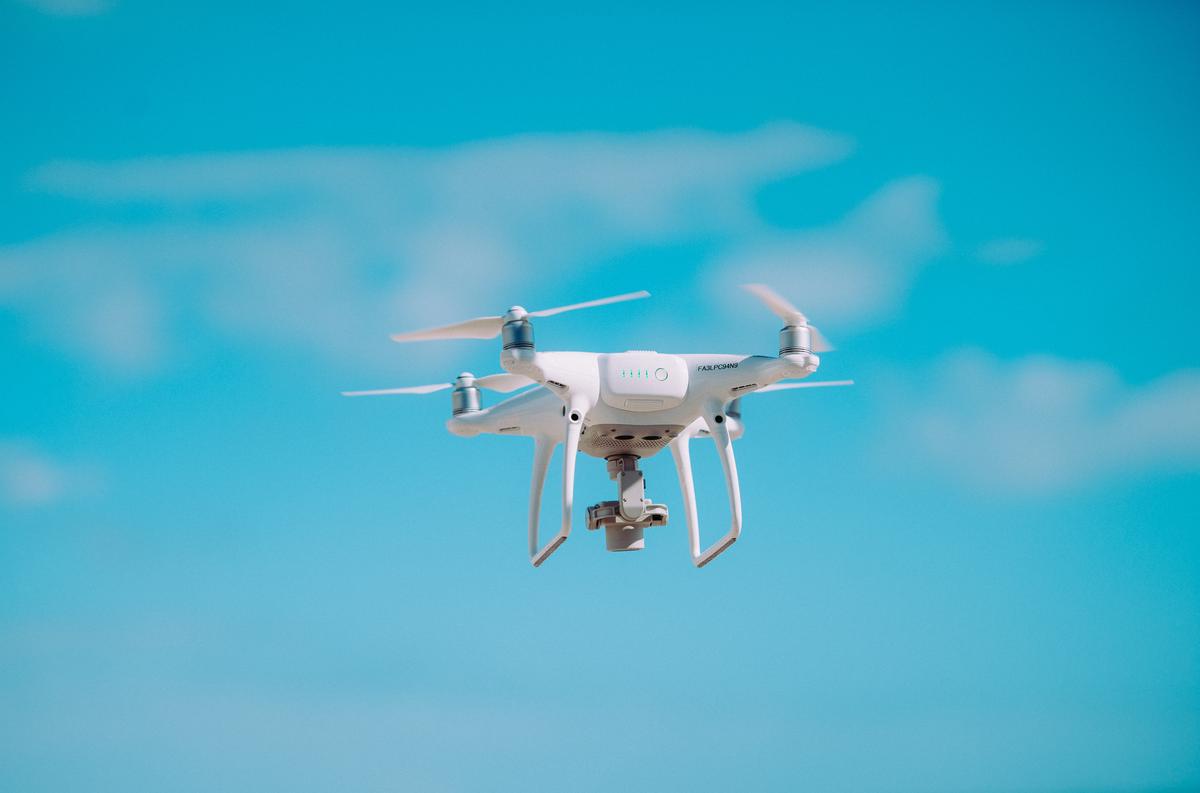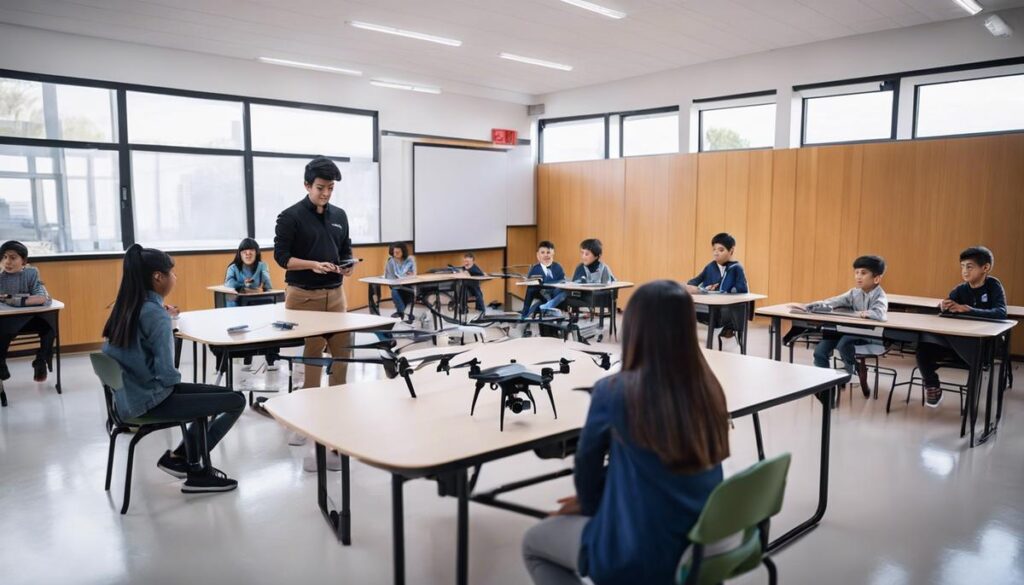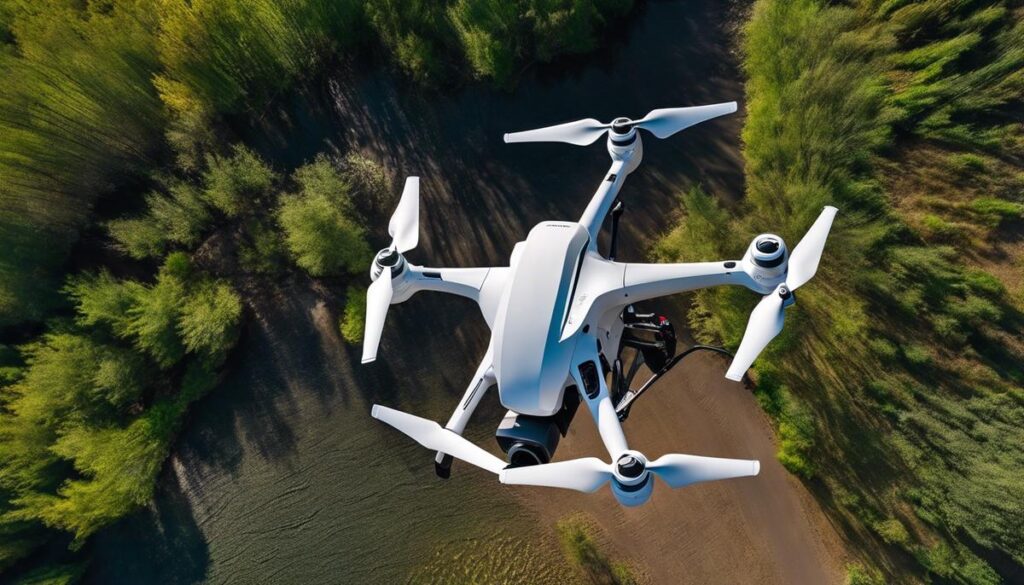As we step into an era of unprecedented technological innovation, the traditional methods of education no longer suffice. Faced with this reality, we chart new territories in incorporating advanced tools into our educational system. One of these tools that holds immense promise is the DJI drone. This paper investigates the unexplored potential of integrating DJI drones into the educational curriculum. We will delve into their possible applications across a diverse range of subjects, the practical implications, and how they might influence the learning outcomes. DJI drones offer an opportunity to transform conventional teaching into a collaborative, interactive, and immersive learning journey in our rapidly evolving digital age.
Integrating DJI drones into the Educational Curriculum
A Paradigm Shift: The Integration of DJI Drones into Education
Reshaping the dynamics of traditional teaching methods, the use of drones, specifically of the DJI pedigree, has been gaining significant traction in contemporary educational environments. This article navigates through the exciting corridors of DJI drones and explains methods for their effective integration into an existing learning curriculum.
DJI, an industry leader in the realm of civilian drones, is known for its advanced drone technology. Schools and universities worldwide are progressively engaging with DJI drones, unveiling groundbreaking educational experiences, primarily in Science, Technology, Engineering, and Mathematics (STEM) domains.
One prevalent strategy is to incorporate DJI drones into project-based learning, an approach that prioritizes practical problem-solving over theoretical teachings. DJI drones offer an active hand-on mechanism, compelling the students to think strategically, develop teamwork, and significantly improve their technological literacy. As an instance, students can program drones to follow specific flight paths or carry out pre-defined tasks, cementing their understanding of abstract mathematical concepts.
Alongside STEM, drones play prominent roles in the realms of Geography and Environmental Science. Operating DJI drones for projects such as mapping areas or studying local ecology delivers a real-world context to the dark corners of these subjects. By manipulating drone data, students learn about satellite images, geographical estimation, and the value of ecological preservation.
Art education also emerges as an unexpected beneficiary of DJI drones. The aerial perspective offered through drone photography unravels a whole new creative avenue for students. It heightens their visual literacy, expands their understanding of spatial relationships, and illuminates the intersection of technology and art.
In the field of Physical Education, the DJI drone’s peculiar ability to follow moving objects can be utilized effectively. Physical performances can be documented and analyzed through drone footage, aiding the evaluation process and opening doors for novel sporting activities.
However, the intentional integration of DJI drones into the education sphere comes bundled with certain cautions. A clear understanding of regulations and respect for privacy rights remain essential components. Strategic planning, comprehensive training programs, and carefully structured guidelines should be in place to ensure student safety and adherence to local legislation.
The fruitful integration of DJI drones for education not only accrues benefits for the students but also empowers educators to expand and personalize their instructional strategies. Whisking away from traditional teaching methodologies, the educational campus is witnessing an exciting cross-pollination between cutting-edge technology and academia. Through the integration of DJI drones, education finds itself in a forward propelling trajectory – towards an innovative, informative, and pragmatic future.

The Practical Implications of DJI drones in Education
Educational Infrastructure and Administration
Implementing DJI drones in the education sector could drastically alter several aspects of educational infrastructure and administration. Their ability to accurately capture aerial footage could be employed by school administrators in various innovative ways. For instance, drones could assist in creating detailed 3D models of school buildings and campuses which would be beneficial for facility maintenance, planning renovations or expansions. Another practical application lies in their potential utility for safety and security. By employing DJI drones with thermal imaging capabilities, schools could improve their surveillance systems significantly, identifying potential risks more proactively.
Inclusive Education
One of the often overlooked strengths of DJI drones is their ability to provide an effective inclusion tool within the educational landscape. For students with physical disabilities that preclude them from participating in certain activities like field surveys, drones provide an alternative. Utilizing DJI drones, these students can access and participate in activities in real-time without facing any physical constraints. This can foster a more inclusive learning environment, eradicating the barriers that previously hindered certain student populations.
Real-time Learning Experiences
DJI drones also have the potential to deliver real-time learning experiences. They can transmit live videos, thereby allowing students to explore remote or inaccessible areas virtually. For instance, in a Biology class, drones could provide a bird’s eye view of a forest ecosystem or, in an Archaeology unit, uncover hidden prehistoric fossils. Such perspectives, presented in real time, can enable students to appreciate the vibrancy and relevance of their academic material, supplementing traditional classroom teaching.
Classroom Management
While the integration of DJI drones into the educational sector brings a myriad of benefits, it also requires a level of adeptness in classroom management. Teachers would have to build competencies in managing drone flights while facilitating classroom learning. It would necessitate the development of new policies, rules, and guidelines concerning privacy and safety. Despite the advancements in technology, educators cannot afford to lose sight of their fundamental role – enabling a safe and conducive learning environment.
With the above points in consideration, the practical implications of DJI drones in the education sector are multifold. Their use not only holds the potential to transform teaching pedagogies but can also contribute substantially to the physical infrastructure and administration of educational institutions, whilst promoting an inclusive and immersive learning environment.

Photo by anniespratt on Unsplash
Assessing Learning Outcomes using DJI Drones
While the innovative attributes and application of DJI drones in the education sector are clear, it’s beneficial to delve into an assessment of this technology’s measurable impacts. Systematic evaluation can provide invaluable insights, contributing to the constructive development of teaching and learning strategies.
Research has shown that the most effective way to measure learning outcomes is through a formative assessment approach. This method involves continuous evaluation of learners’ understanding, application, and synthesis of new concepts, and can be applied to the use of DJI drones. Teachers can assess students’ skills progression as they maneuver the drones, program flight paths, and interpret data collected by onboard sensors. Assessment criteria might include the proper application of safety practices, accuracy of flight control, and comprehension of spatial data analysis.
Learning outcomes can also be observed through student engagement, collaboration, and problem-solving. For example, students may exhibit higher levels of active participation and teamwork when given the opportunity to fly a drone as compared to traditional classroom activities. In addition, students’ problem-solving abilities may be enhanced as they navigate complex flight routes or troubleshoot technical issues.
One of the unique aspects of DJI drones in education is the potential for student-driven project-based learning. The scope of projects that can be undertaken with a drone is vast, allowing learners to deepen their understanding of various subjects while engaging in real-world applications. As such, reviewing the quality and complexity of these projects can be a strong indication of learning gains.
Surveying students to gauge their interest, confidence, and perception of drones and related technologies can be another effective method of measurement. Changes in these parameters over time can reflect knowledge acquisition and skill development.
DJI drone usage also carries numerous impacts beyond the classroom. Unique applications in administration and infrastructure showcase the drone’s versatility. Surveying school properties for maintenance, creating 3D models for future planning, or enhancing security with thermal imaging are all noteworthy uses. Each of these applications can be measured by evaluating time efficiency, cost-effectiveness, and improvements in safety.
Inclusion of students with physical limitations is another noteworthy consideration. DJI drones offer new avenues for these students to participate in active learning experiences. The impact here can be measured by the level of inclusion achieved and consequent enhancement in these students’ learning experiences.
The integration of live transmitted footage offers an exceptional tool for real-time learning, contributing to an immersive experience that transcends traditional learning boundaries. There’s a definite potential to measure this impact through student feedback and engagement metrics.
However, integrating this relatively new technology requires careful management, not only in terms of day-to-day usage but also policy guidelines, privacy considerations, and legal aspects. The importance of crafting comprehensive policies to guide drone usage cannot be understated, as this measures the success and sustainability of the integration of DJI drones in the education sector.
In sum, measuring learning outcomes and impacts necessitates a multifaceted approach that embraces various assessment methods from practical skills through to policy development. The integration of DJI drones into the education sector holds the promise of exciting advancements. By thoughtfully studying the effects of this integration, we can ensure that we harness this technology’s power while optimising learning experiences.

The ever-evolving world of drone technology presents a myriad of unprecedented opportunities for reshaping the educational landscape. Educators globally are in the initial stages of harnessing the power of DJI drones to enhance the learning process. If appropriately integrated and carefully assessed, DJI drones could effectively revolutionize how we comprehend and impart education. As we envision a future where technology and education converge, DJI drones promise an exciting and transformative tool facilitating practical, relevant, and engaging learning. Though it requires considerable effort and thoughtful measures, turning our classrooms into interactive laboratories incubating curious and innovative minds could be the grand payoff.



